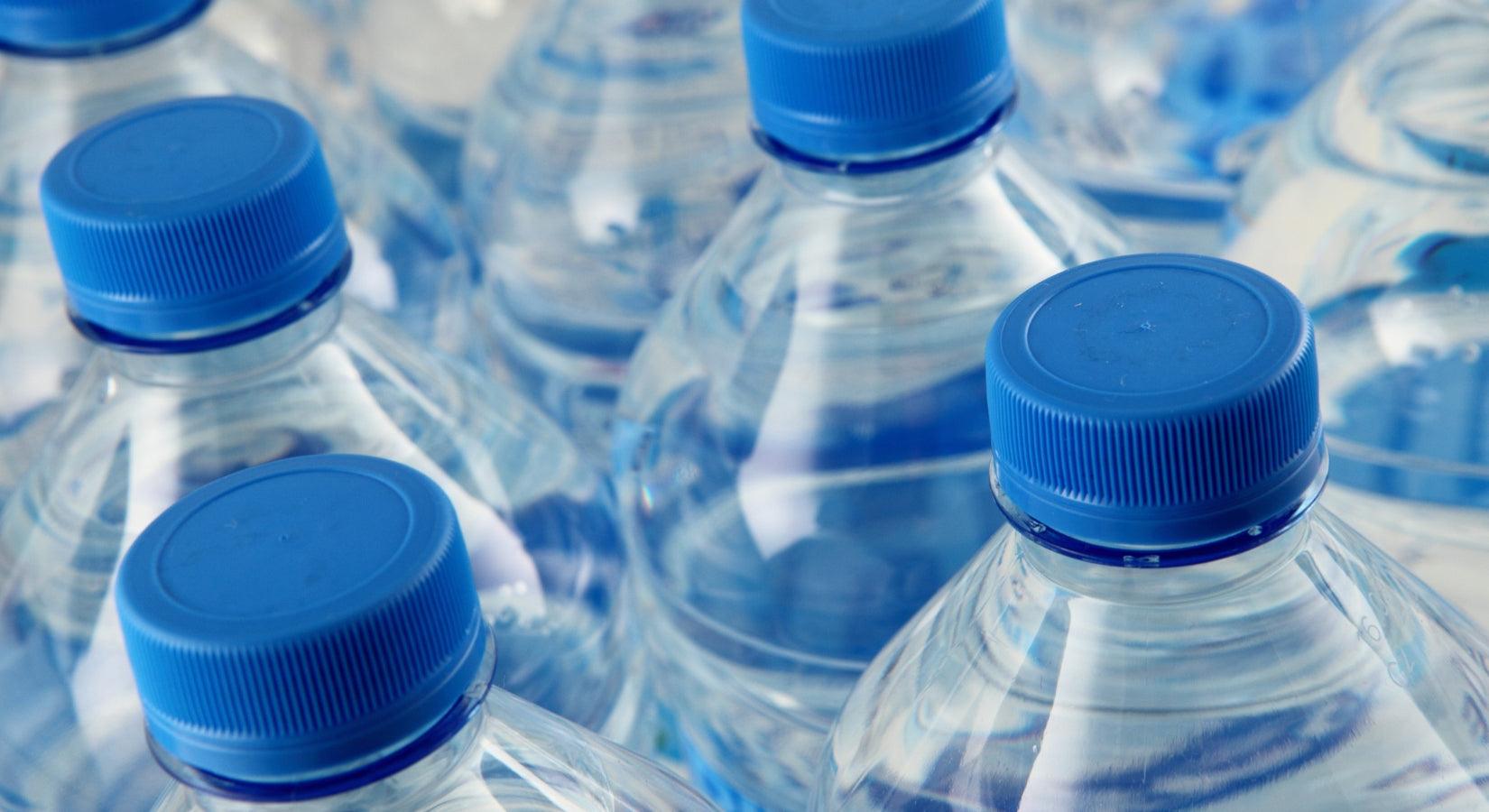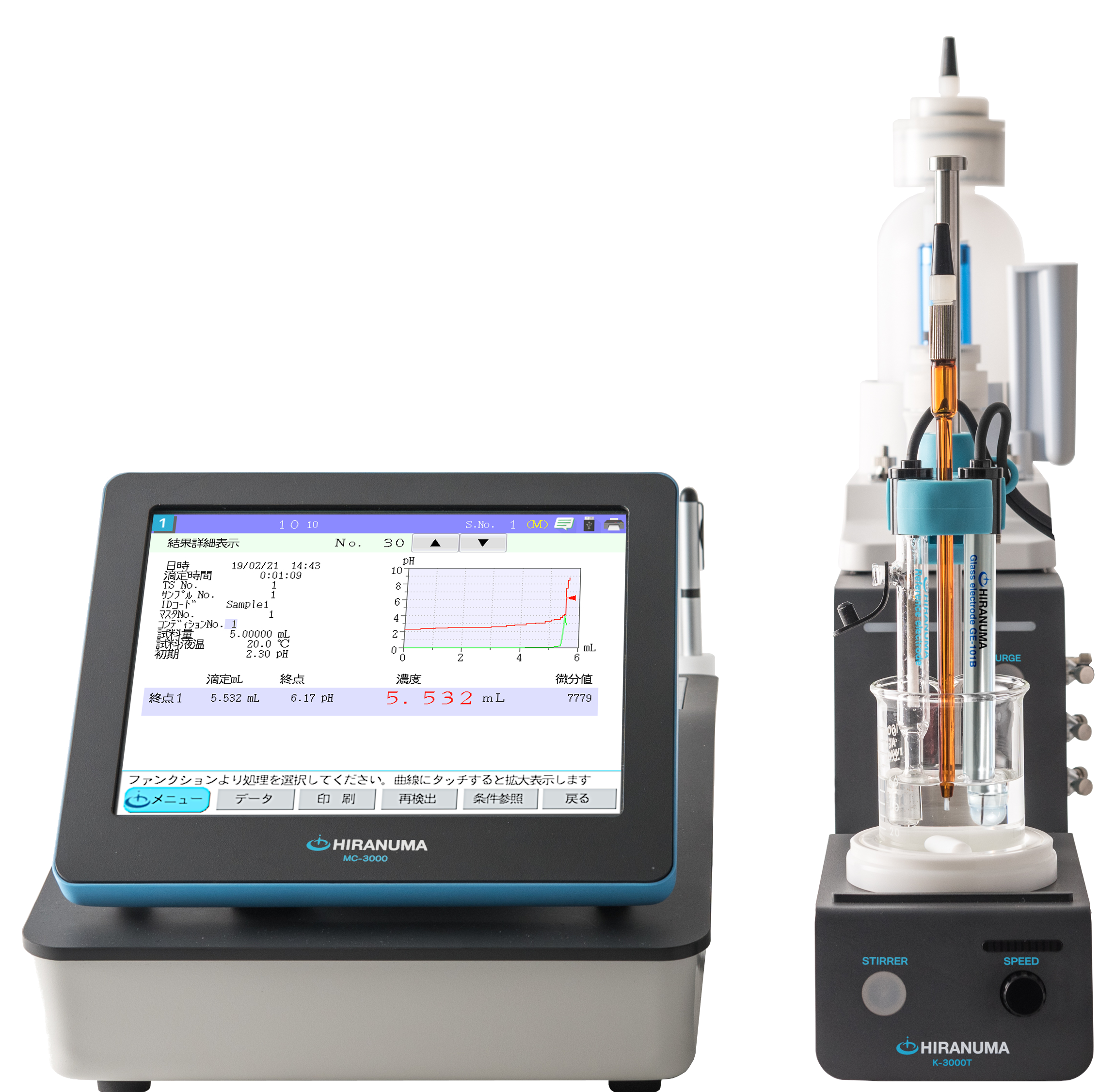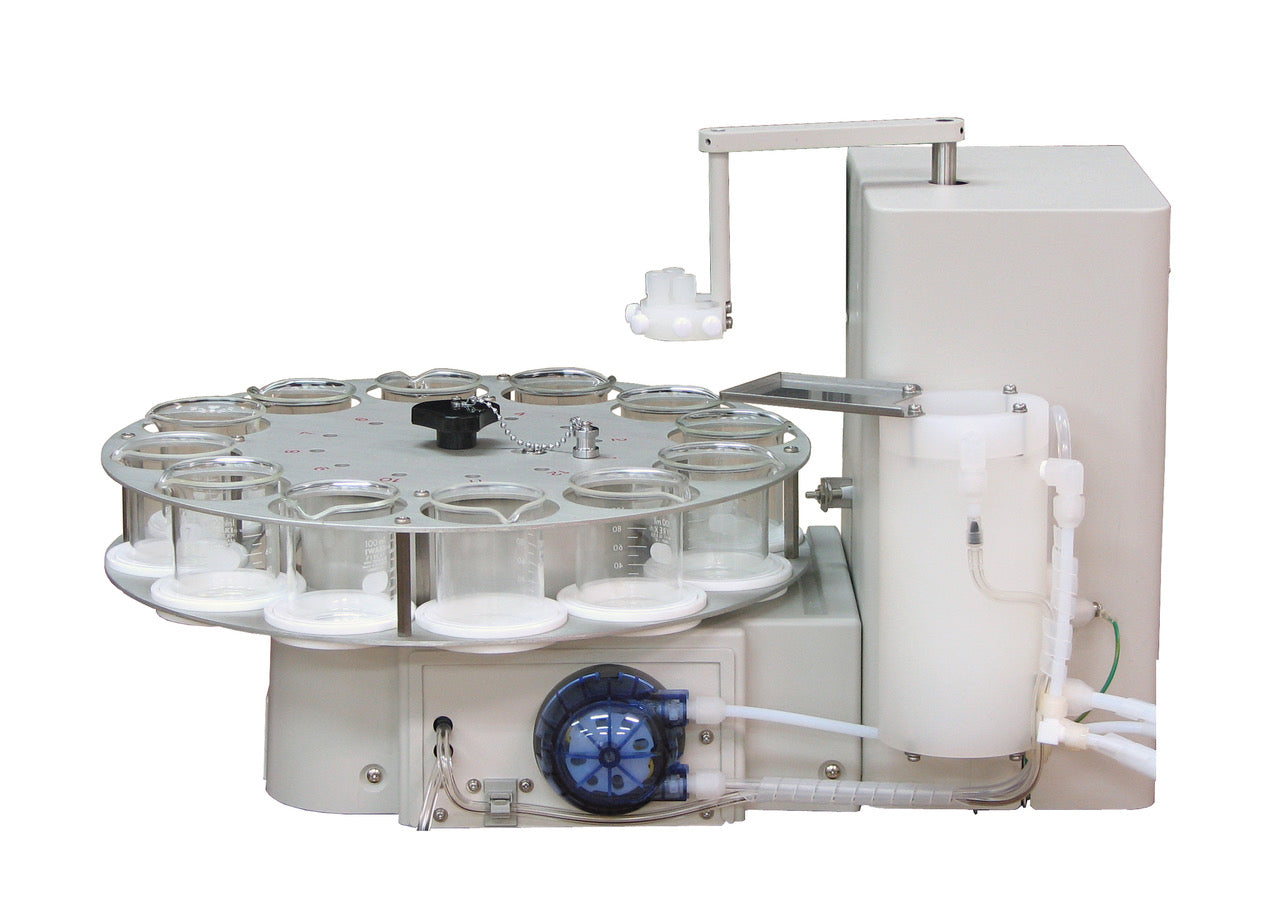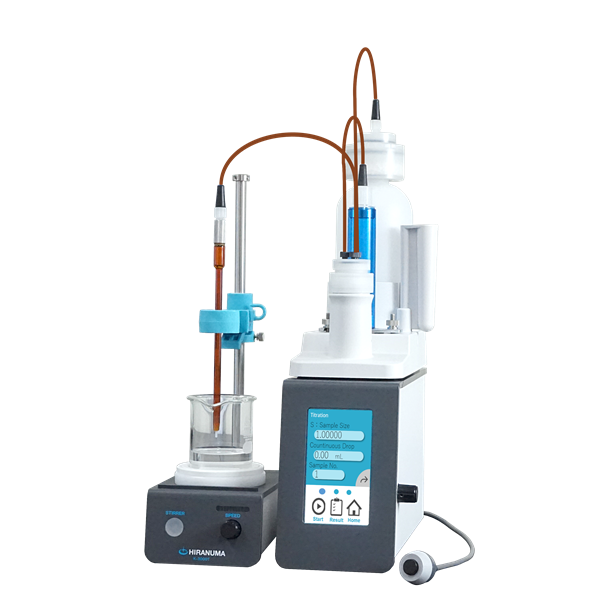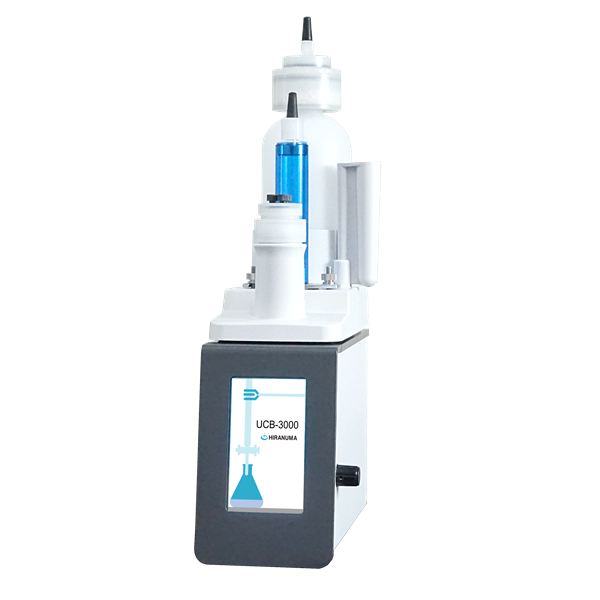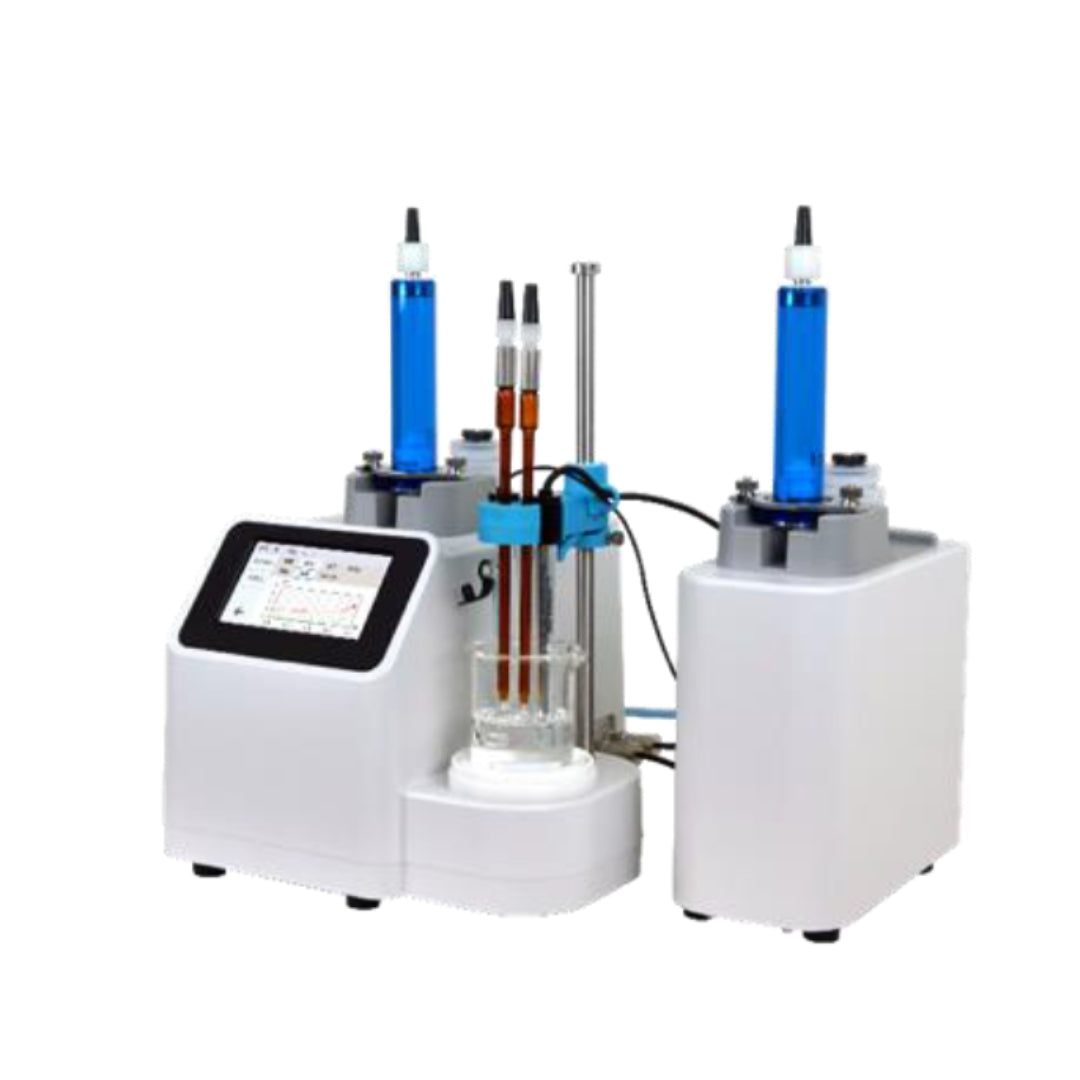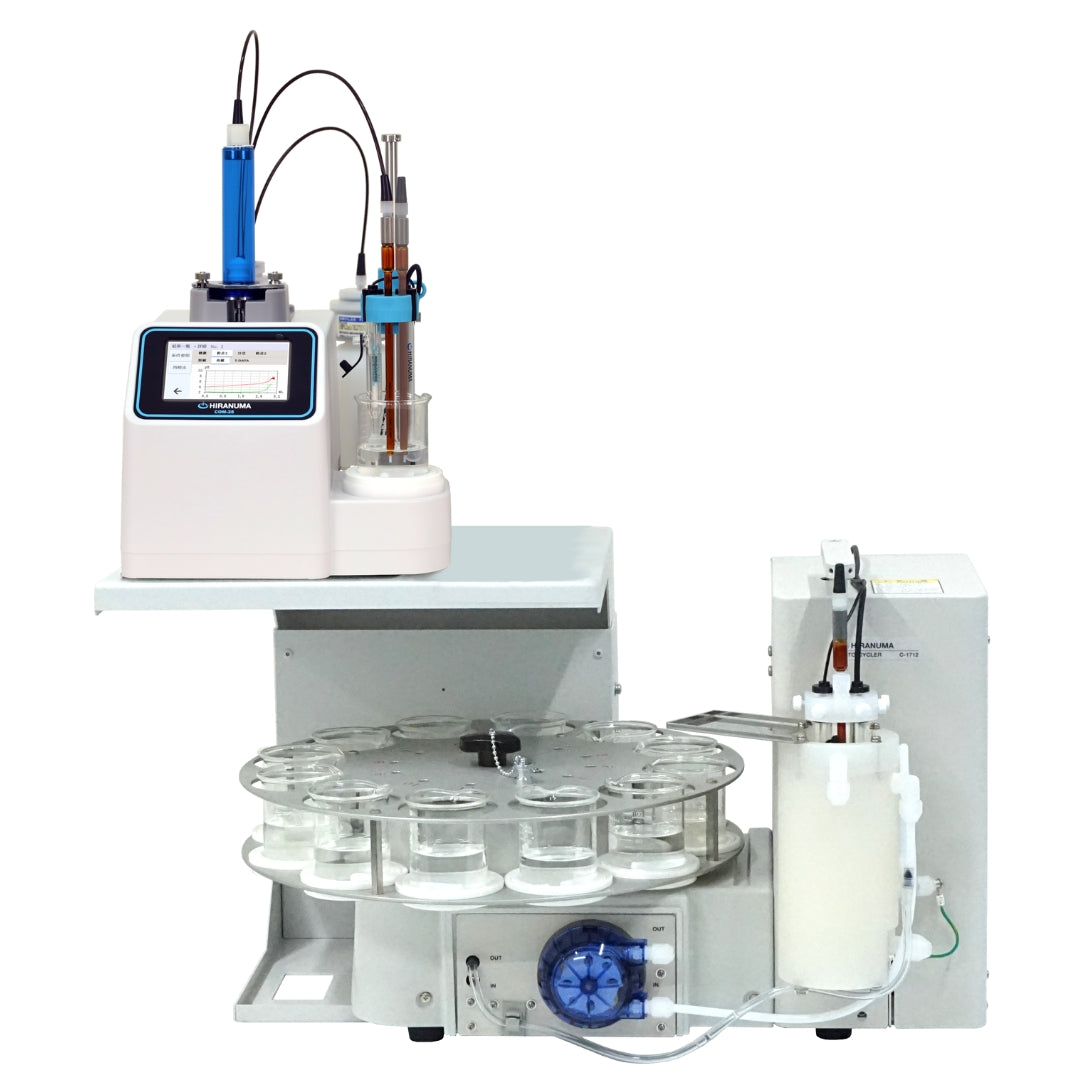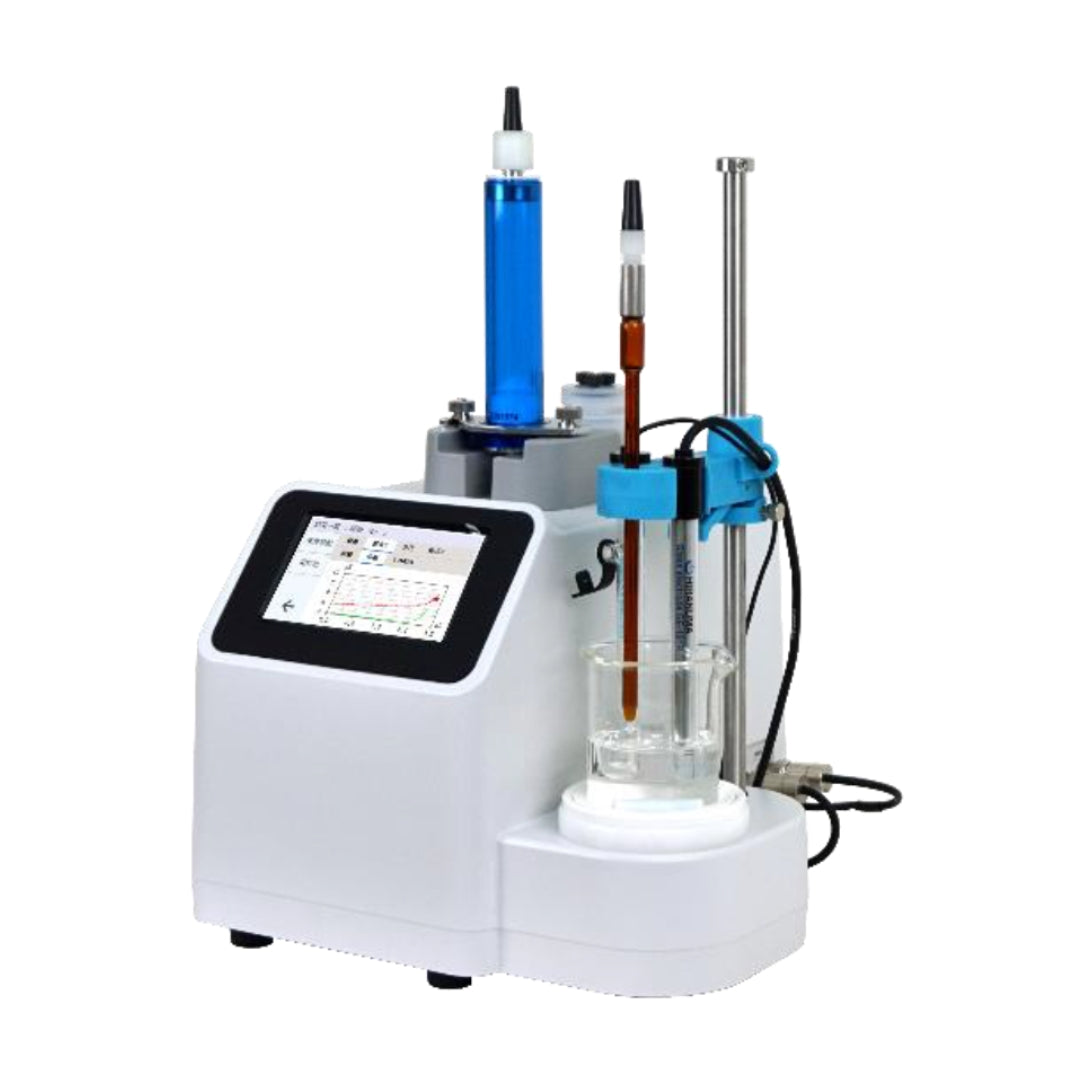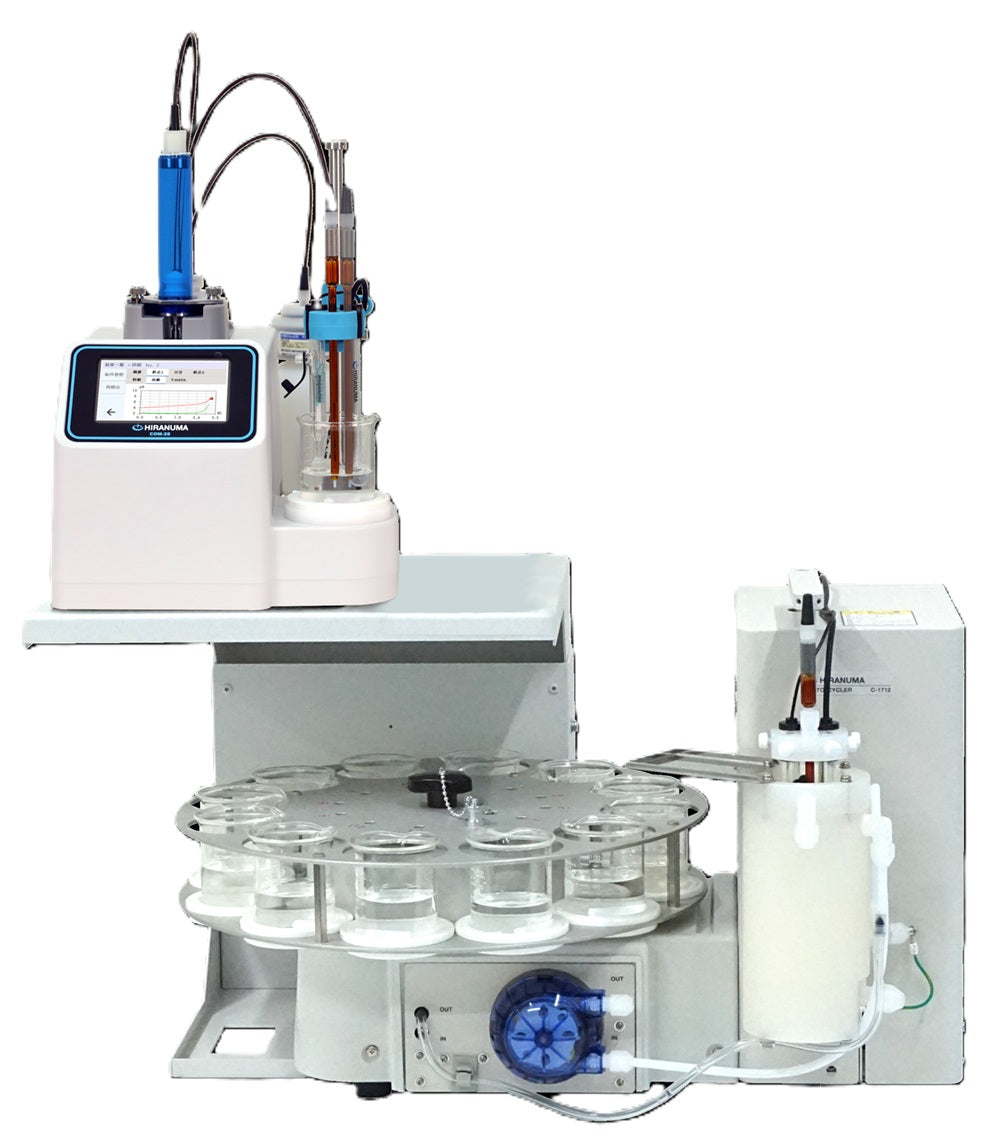| HIRANUMA APPLICATION DATA | Automatic Titrator | Data No. | D5 | Nov. 14,2018 |
| Environment | Determination of alkalinity in bottled water |
1. Abstract
Natural water contains alkaline components such as hydroxides and carbonates. Such water indicates alkaline pH, the alkalinity is used as an index. The alkalinity is expressed as mg/L of calcium carbonate (CaCO₃) equivalent for these alkaline components. Alkalinity is divided into phenolphthalein alkalinity (P alkalinity) and total alkalinity (T alkalinity or M alkalinity) by the pH value of neutralization point.
| Alkalinity |  |
P Alkalinity ……………Endpoint at pH 8.3 |
| T (M) Alkalinity ………Endpoint at pH 4.8 |
Total amount of the hydroxides and half amount of carbonates are measured when it is titrated to about pH 8.3 with sulfuric acid titrant.
| 2OH⁻ + H₂SO₄ → SO₄²⁻ + 2H₂O | |
| 2CO₃²⁻ + H₂SO₄ → SO₄²⁻ + 2HCO₃⁻ |
All of the bicarbonates are neutralized when it is titrated successively to about pH 4.8.
| HCO₃⁻ + H₂SO₄ → SO₄²⁻ + 2CO₂ + H₂O |
This report introduces a measurement example for bottled water using potentiometric titration as end point detection method according to Standard Methods for the Examination of Water.
2. Configuration of instruments and Reagents
| (1) | Configuration of instruments | ||
| Main unit | : | Hiranuma Automatic Titrator COM series | |
| Electrodes | : | Glass electrode GE-101B Reference electrode RE-201Z Thermistor electrode TE-403 *Instead of above electrode, the following electrodes are usable. ・Glass reference combination electrode GR-501B…Fixed sleeve type ・Glass reference combination electrode GR-511B…Moveable sleeve type |
|
| (2) | Reagents | ||
| Titrant | : | 0.01 mol/L Sulfuric acid standard solution | |
3. Measurement procedure
| (1) | Dispense 100 mL of sample into a 200 mL beaker with volumetric pipette. |
| (2) | Immerse electrodes and start titration with 0.01 mol/L sulfuric acid standard solution. |
4. Measurement conditions and results
Examples of titration conditions
(1) Titration of P alkalinity

(2) Titration of T (M) alkalinity

Measurement results
Results of P Alkalinity
| Number of measurement |
Size (mL) |
Titrant volume(mL) |
Concentration (CaCO₃ mg/L) |
|---|---|---|---|
| 1 | 100 | 1.024 | 10.281 |
| 2 | 100 | 1.017 | 10.211 |
| 3 | 100 | 1.034 | 10.381 |
| Statistic calculation |
Avg. | 10.2 mg/L | |
| SD | 0.0854 mg/L | ||
| RSD | 0.83 % | ||
Results of T (M) Alkalinity
| Number of measurement |
Size (mL) |
Titrant volume(mL) |
Concentration (CaCO₃ mg/L) |
|---|---|---|---|
| 1 | 100 | 5.117 | 61.656 |
| 2 | 100 | 5.120 | 61.615 |
| 3 | 100 | 5.108 | 61.666 |
| Statistic calculation |
Avg. | 61.6 mg/L | |
| SD | 0.0270 mg/L | ||
| RSD | 0.04 % | ||
Examples of titration curves

5. Note
The alkalinity is accurately determined by potentiometric titration instead of color indicator titration.
Owing to function of conditions connection, the successive titration of P alkalinity and T (M) alkalinity can be efficiently performed.
Setting for endpoint detection is “Set” method on this titration. Since the specified pH is detected as endpoint, the exact pH detection is required. Therefore pH calibration with pH standard solutions is necessary before the measurement.
Keywords: Bottled water, Alkalinity, P alkalinity, T (M) alkalinity, Standard Methods for the Examination of Water
*Some measurement would not be possible depending on optional configuration of system.

